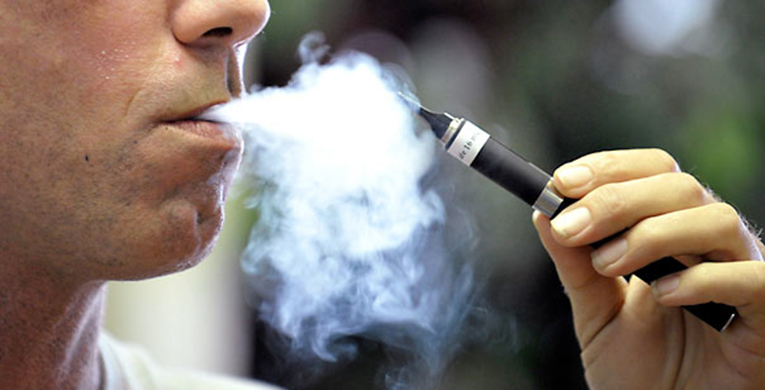
Smoking e-cigarettes, or “vaping,” has become very popular in recent years. It has been dubbed by advertisements as a safer alternative to cigarettes.
Michael Pironi, a graphic design major, said he began smoking cigarettes in September 2013. Before too long, he was smoking a pack of cigarettes in less than two days. In February he switched to e-cigarettes because he likes the flavors and it’s less harmful.
But is it? The Society for Science and the Public published an article in December 2013 claiming that nicotine, the addictive ingredient in tobacco that many switch to e-cigs for, may very well be the cause for damaged arteries.
The chemicals used in e-cigarettes may be different from other tobacco products, but that doesn’t mean they aren’t dangerous. Some of the chemicals include the preservative propylene glycol; nitrosamines, 90 percent of which are carcinogenic and may cause cancers, according to Richard Scanlan, dean of research emeritus and professor of food science at Oregon State University; formaldehyde and acrolein.
Other than the chemical factors, e-cigarettes are made more enticing by their variety of flavors. “I have used orange swirl which tastes like creamsicle, melon which tastes like cantaloupe and raspberry lemonade,” Pironi said.
He is not alone. Freshman Caleb Crowe uses his e-cigs with flavors like mango, cinnamon or rum. Crowe has been using e-cigarettes since January to save money on tobacco products.
In 2009, flavored cigarettes were banned because they look to be aimed at children. E-cigarettes are not currently regulated in that way. The flavors draw in a younger crowd. The Society for Student Science reports that many young people seem to be experimenting with e-cigarettes even before trying tobacco products.
There are also many people that go to e-cigarettes in an attempt to quit smoking traditional cigarettes.
Chamberlain Graves, also a freshman at USM, said e-cigarettes helped him quit for about two months.
Now he smokes both cigarettes and e-cigarettes. Tobacco researchers at The University of California in San Francisco recently surveyed 949 individuals for a year. The study showed no significant difference between the percentage of cigarette smokers who quit tobacco and e-cigarette smokers who quit tobacco. The Society for Student Science also states that three in every four pre-teens and teens who vape also smoke tobacco cigarettes.
This leads to the conclusion that more than an aid, e-cigarettes have become a reason to continue the habit. In many cases, they are even the cause to start the habit. E-cigarettes are advertised as safer much like one type of cigarette was advertised as safer over another in the 1950s and early 1960s. These claims currently have basis only in lack of evidence against the harms of vaping.
Some cities like Los Angeles and Long Beach have taken steps to protect the public from the unknowns that e-cigarettes represent. They have approved rules on the public use of e-cigarettes that reflect rules on the public use of tobacco products. There, vaping is now banned in public places, like restaurants and beaches.

























